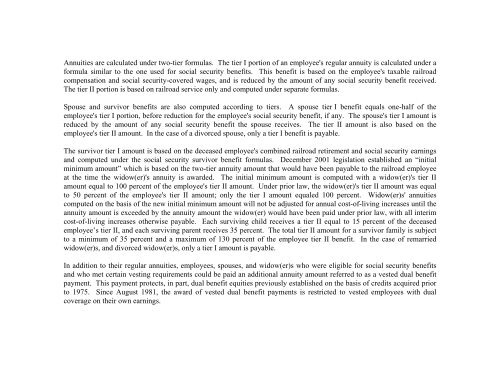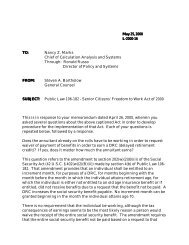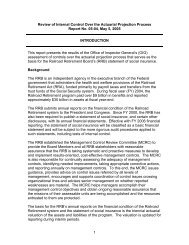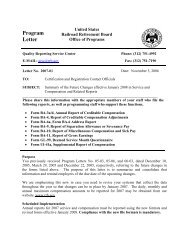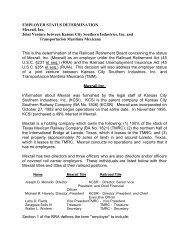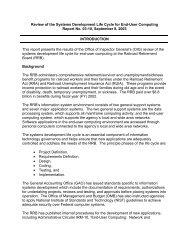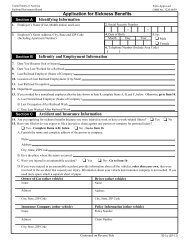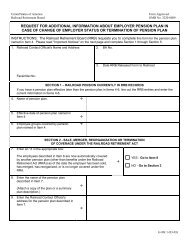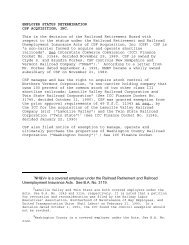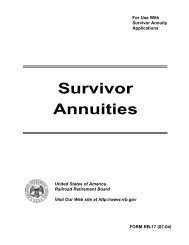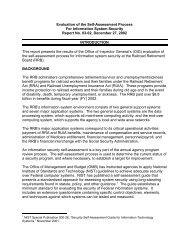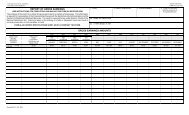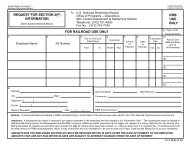Section B - U.S. Railroad Retirement Board
Section B - U.S. Railroad Retirement Board
Section B - U.S. Railroad Retirement Board
You also want an ePaper? Increase the reach of your titles
YUMPU automatically turns print PDFs into web optimized ePapers that Google loves.
Annuities are calculated under two-tier formulas. The tier I portion of an employee's regular annuity is calculated under aformula similar to the one used for social security benefits. This benefit is based on the employee's taxable railroadcompensation and social security-covered wages, and is reduced by the amount of any social security benefit received.The tier II portion is based on railroad service only and computed under separate formulas.Spouse and survivor benefits are also computed according to tiers. A spouse tier I benefit equals one-half of theemployee's tier I portion, before reduction for the employee's social security benefit, if any. The spouse's tier I amount isreduced by the amount of any social security benefit the spouse receives. The tier II amount is also based on theemployee's tier II amount. In the case of a divorced spouse, only a tier I benefit is payable.The survivor tier I amount is based on the deceased employee's combined railroad retirement and social security earningsand computed under the social security survivor benefit formulas. December 2001 legislation established an “initialminimum amount” which is based on the two-tier annuity amount that would have been payable to the railroad employeeat the time the widow(er)'s annuity is awarded. The initial minimum amount is computed with a widow(er)'s tier IIamount equal to 100 percent of the employee's tier II amount. Under prior law, the widow(er)'s tier II amount was equalto 50 percent of the employee's tier II amount; only the tier I amount equaled 100 percent. Widow(er)s' annuitiescomputed on the basis of the new initial minimum amount will not be adjusted for annual cost-of-living increases until theannuity amount is exceeded by the annuity amount the widow(er) would have been paid under prior law, with all interimcost-of-living increases otherwise payable. Each surviving child receives a tier II equal to 15 percent of the deceasedemployee’s tier II, and each surviving parent receives 35 percent. The total tier II amount for a survivor family is subjectto a minimum of 35 percent and a maximum of 130 percent of the employee tier II benefit. In the case of remarriedwidow(er)s, and divorced widow(er)s, only a tier I amount is payable.In addition to their regular annuities, employees, spouses, and widow(er)s who were eligible for social security benefitsand who met certain vesting requirements could be paid an additional annuity amount referred to as a vested dual benefitpayment. This payment protects, in part, dual benefit equities previously established on the basis of credits acquired priorto 1975. Since August 1981, the award of vested dual benefit payments is restricted to vested employees with dualcoverage on their own earnings.


